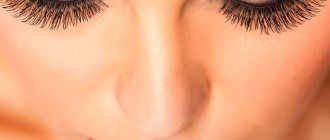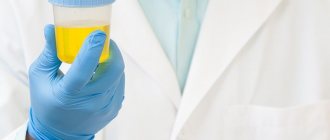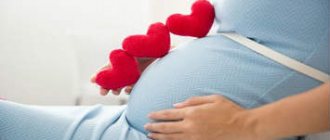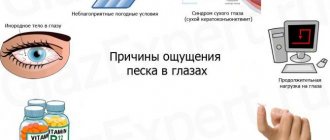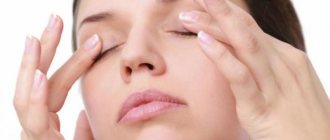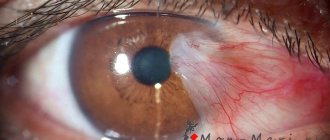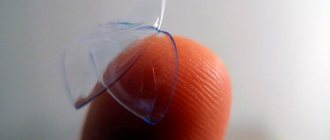It may be painful to pee after a cesarean section due to inflammation of the bladder (cystitis). It is provoked by mechanical irritation from the catheter, infection, and stagnation of urine after spinal anesthesia. Predisposing factors: decreased immunity, violation of personal hygiene rules, foci of chronic inflammation, complications of surgery.
Symptoms: pain, pain, frequent urge to urinate, cloudy urine or reddish coloration. When they appear, you should immediately visit a gynecologist or urologist for examination (urinalysis, blood tests, ultrasound, cystoscopy).
Treatment includes antibiotics (Monural, Ciprofloxacin, Augmentin), herbal uroantiseptics (Canephron, decoction of bearberry, lingonberry leaf), and drinking plenty of fluids (water, cranberry juice). A warm shower and the sound of flowing water can help make urination easier.
Why does it hurt to pee after a caesarean section?
It may be painful to write after a cesarean section due to inflammation of the bladder, irritation of the urethra, and for several other reasons (see table). You should not try to normalize urination on your own; a doctor’s examination and examination are always necessary to identify the provoking factor and select treatment.
| Cause | Explanation of urinary disorders |
| Catheter | Injury to the urethral mucosa |
| In the first days there is no reflex to excrete urine, so stagnation and bacterial growth are possible | |
| Spinal anesthesia during surgery | In the first days there is no reflex to excrete urine, so stagnation and bacterial growth are possible |
| Getting infected | Inflammation in the vagina, cervix, dysbiosis (changes in microflora), insufficient hygiene of the genital organs |
| Impaired bladder tone | Muscle relaxation due to hormonal changes during pregnancy, decreased sphincter closing ability (opens the way for germs to enter) |
| Weakened immunity during pregnancy, blood loss and stress during childbirth | Unhindered proliferation of bacteria, decrease in local and general resistance to infection |
| Postoperative wound | The incision on the uterus often heals with the formation of adhesions with the wall of the bladder, and when it is emptied, a painful tension occurs |
| Pyelonephritis during pregnancy | In the postpartum period, the infection descends from the kidneys |
How to speed up recovery after a caesarean section
According to the US Centers for Disease Control and Prevention (CDC), cesarean sections account for 31.9% of all births in the country. Although a caesarean section is a serious abdominal operation, it may be the only life-saving option for mother and child. However, the recovery period can take a long time.
What to expect after a cesarean section?
INFORMATIVE:
Could airborne pollen cause the spread of SARS-CoV-2?
It is generally accepted that full recovery after a cesarean section takes 4–6 weeks. However, each woman is different, and many data still indicate the need for a longer period of time. Some studies have found that 60% of women still have pain at the incision site 24 weeks after birth.
An experienced doctor, the company of other women who have had similar surgery, and a willingness to ask questions can make the recovery process much easier.
First time after childbirth
Many women undergoing cesarean section receive an epidural or spinal anesthesia. This form of anesthesia allows you to not feel the lower part of your body and still be conscious. It may take several hours for sensitivity to return. During this period, you will not be able to walk or use the toilet without assistance. Many women have a urinary catheter placed in the postoperative period.
If general anesthesia is necessary, awakening may take some time. During recovery from anesthesia, you may experience confusion, nausea, fear, or embarrassment.
However, for many new parents, the main concern is the baby. Previously, it was common practice for hospital staff to remove the baby from the mother after birth. Many hospitals now offer what are called gentle caesarean sections.
This means that if the baby is fine, it is left on the mother's chest or placed in the hands of a loved one while the surgeon stitches up the wound on the mother's abdomen.
It is important to clarify this option before the procedure and communicate your wishes for the care of your child to the medical staff.
First day
In the first 24 hours after a caesarean section, many of the same problems as during a normal birth exist. These include the mother's psychological adjustment, attempts at breastfeeding, and the arrival of visitors. Most women remain in the hospital for 2 to 4 days after a cesarean section.
The most common problems that occur in the first days after surgery
Thrombosis
One of the biggest risks of delivering a baby by cesarean section is blood clots. This is more likely in people who are overweight or who remain inactive for long periods of time.
Women who cannot walk should wear special compression garments that support blood circulation in the lower extremities. Otherwise, it is important to get up and start moving as quickly as possible.
Pain and cramps
In the first 24 hours, there is usually pain at the incision site. Many women also feel cramps. These sensations are similar to menstrual cramps, but may be more intense.
Infection
The nurse or doctor should carefully examine the incision site to look for signs of infection. They are also required to check the vagina for possible bleeding. Even after a cesarean section, everything that accompanied the gestation of the fetus must come out of the uterus. Vaginal discharge usually lasts from 4 to 6 weeks, but in the first days it is most abundant.
First weeks
The risk of infection is highest during the first few weeks. This is also when you are more likely to develop serious bleeding.
Normal activities and activities should be avoided for 6–8 weeks. Driving is usually unsafe for 4 to 6 weeks.
Pain at the incision site may persist for up to 1–2 weeks. You may also feel weak in the muscles around the wound. During the first 2 weeks, your doctor may prescribe pain medication. It is necessary to clarify information regarding the safety of feeding a child while taking medications.
Symptoms usually go away as the incision heals and the uterus returns to its normal size.
In most cases, doctors use self-absorbing sutures. In other cases, the doctor may need to remove the stitches, usually a few weeks after delivery.
Long-term recovery
Recovery after a cesarean section takes time, sometimes even longer than the doctor warned. Some women experience muscle or incision pain for several months, while others struggle to overcome urinary incontinence due to weakened pelvic floor muscles. Seeing a physical therapist can help with long-term recovery.
9 tips for a quick recovery
- Rest more
For many new parents, relaxing in a home with a newborn is almost impossible. Sometimes babies sleep irregularly and may wake up every 1-2 hours. You should try to sleep when the baby sleeps, or ask a loved one for help to get some sleep.
- Need to ask for help
Caring for a child after major surgery can be overwhelming and difficult for new parents to cope with alone. Don't be shy about asking your husband, neighbor, or family friend for help.
- It is important to regulate emotions
The birth of a child is a very emotional event. Women who have had a difficult birth or C-section that they hoped to avoid may experience difficult feelings. These emotions can make parenting difficult, as well as feelings of guilt and shame.
It is important to talk to your husband, friend or doctor. Getting support early can help reduce the risk of postpartum depression and help women experiencing postpartum depression get treatment more quickly.
- Regular walks
Hill climbing and intense aerobic exercise are contraindicated during the first weeks of recovery. Alternatively, walking can help keep you fit and in a good mood. It also reduces the risk of blood clots and other cardiovascular problems. You can meet other mothers and walk with strollers together.
- No need to endure pain
If you need to take painkillers, you should not endure the pain. However, if they do not help and the pain intensifies, then you should consult a specialist.
- It is important to watch for signs of possible infection
Common signs of infection include swelling, severe pain, redness at the incision site, or chills. If these symptoms occur, you should seek medical help immediately.
- Fight constipation
Hormonal changes, weakened abdominal muscles and prolonged periods of lying down can lead to constipation. It may be accompanied by pain, and straining during bowel movements can damage the suture. If, nevertheless, a woman experiences constipation, then she needs to drink a lot of water, eat foods rich in fiber, try to move moderately and, if necessary, consult a doctor about taking a laxative.
- Seek help to support breastfeeding
Cesarean section is associated with an increased risk of breastfeeding problems. A lactation consultant can help parents successfully implement the process, even when they face obstacles such as temporary separation from their baby after birth. If breastfeeding is difficult, you should seek help.
- Seek help when needed
Some women experience long-term pain after a caesarean section. Others experience muscle weakness, urinary incontinence, or depression. These problems are common, and people should not be ashamed to ask about them if they have such experience. There is also no need to suffer in silence.
If symptoms persist long after birth, the new mother should contact her doctor or midwife for help.
When to see a doctor
After a caesarean section, you should seek medical help in the following situations:
- intense contractions of the uterus;
- variable uterine spasms;
- difficulty urinating;
- frequent headache;
- anxiety or depression.
Emergency medical attention is needed if:
- bleeding that requires changing 2-3 pads or tampons per hour for more than 2 hours;
- signs of seam divergence are noted;
- thoughts of harming yourself or your child;
- intense pain in the lower leg, especially if it is accompanied by swelling or numbness of the legs;
- dyspnea.
Caesarean section is not an easy operation and it can overshadow the first happy moments of motherhood. However, with proper care, compliance with all doctor’s instructions and the help of loved ones, this stage can be passed quite easily.
Based on materials from www.medicalnewstoday.com
Why does it hurt to pee after a caesarean section a week later?
If it becomes painful to pee a week after a cesarean section, this means that inflammation is developing in the bladder - cystitis. It is caused in 86% by E. coli, which lives in the lower part of the rectum. There it is considered a beneficial bacterium, but when it enters the urinary tract it causes an acute inflammatory reaction. Less commonly, cystitis is associated with staphylococcal, streptococcal infections, and thrush.
Infection can also occur through the vagina due to exacerbation of chronic inflammation or due to complications of surgery - inflammatory processes:
- inner layer of the uterus (endometritis);
- fiber surrounding the uterus (parametritis);
- ovaries and appendages (salpingoophoritis).
We recommend reading about methods for removing ligature fistula from a postoperative scar. From the article you will learn about the causes of formation and types of ligature fistula after cesarean section, symptoms and diagnosis of pathology, surgical and conservative treatment. And here is more information about how to remove the belly after a caesarean section.
Symptoms of cystitis after cesarean section
The main symptoms of cystitis in women who have had a cesarean section include:
- frequent urge to urinate – the mucous membrane becomes very sensitive when inflamed and reacts to any amount of urine;
- urinary incontinence when coughing, straining, sneezing;
- increased body temperature (may be absent in the first days, as antibiotics are administered);
- soreness (appears only after the end of the course of painkillers), burning, pain when urinating;
- cloudy urine.
The most striking clinical signs appear by days 5-7, since at this time there is no longer any active drug therapy. At first, it is difficult for a woman to distinguish between pain in the lower abdomen due to surgery and pain during urination, and without treatment, the symptoms gradually increase.
Factors causing discomfort after CS
In addition to cystitis, pain after a CS (cesarean section) with urine leakage can also be caused by urethritis, but with it there is a discharge of pus from the opening of the urethra. With the development of infection in the genital organs (uterus, ovaries, cervix, vagina), itching, unpleasant odor, and purulent discharge come to the fore.
Painful or uncomfortable sensations are also associated with the following factors:
- postoperative suture;
- intestinal dysfunction, bloating;
- development of adhesions in the abdominal cavity;
- contraction of the uterine cavity (pain in the scar area), intensifies during breastfeeding.
Suture after cesarean
What other signs indicate: burning sensation, blood in the urine, abdominal swelling
The appearance of a burning sensation and blood in the urine is a sign of a severe inflammatory process. It is accompanied by destruction of the mucous membrane of the bladder; urine may not only become cloudy, but also acquire a reddish tint. Often this causes an increase in body temperature to 38 degrees.
Swelling in the lower abdomen is associated with the healing of the postoperative wound and the gradual restoration of blood circulation in the pelvis. Normally, it should decrease by the end of the first week. If the swelling does not subside and is accompanied by redness and pain in the suture, and discharge appears from the wound, then this is a sign of a purulent-inflammatory complication. In such cases, you should immediately contact a gynecologist.
Causes of pain when urinating after cesarean section
The main reasons that cause pain when urinating include:
- Reaction to administered drugs.
- Emotional stress before surgery.
- Insufficient adherence to intimate hygiene rules.
- Inflammation of the urinary ducts during pregnancy.
- Significant blood loss during surgery.
- Unprofessional installation of the catheter.
Cystitis after childbirth
The infection easily enters a woman’s bladder, which is due to the structural features of her urinary tract. An inflammatory process of the mucous membrane begins, which in medicine is also called cystitis. The cause of this disease can be bacteria and childbirth itself. Inflammation of the bladder manifests itself in frequent, painful urination in small portions. A woman experiences cutting and burning sensations when trying to go to the toilet, and the amount of urine released is extremely small. Sometimes in women giving birth, the urine released may contain blood. In the postpartum period, the likelihood of cystitis increases significantly, especially if a caesarean section was performed. Prolonged cystitis in women can quickly worsen and develop into a more serious disease - pyelonephritis. In this case, the causative agent of the disease from the bladder penetrates the kidney and leads to its inflammation, which is accompanied by a sharp increase in the mother’s body temperature.
Cystitis
Cystitis after cesarean section is characterized by the absence of pain. This is explained by the use of analgesics that block pain receptors after surgery. Unpleasant sensations in the lower abdomen with cystitis are difficult to recognize due to the presence of pain in the incision area.
Recommended topic:
Pain and pain when urinating in women
Diagnosis of the condition if it hurts to urinate
If after surgery it is painful to urinate, then the woman needs examination:
- urine tests: general, according to Nechiporenko;
- general blood test, biochemistry with kidney tests if indicated;
- smear from the urethra, vagina, cervix with bacteriological examination;
- determination of the infectious agent using PCR (polymerase chain reaction);
- Ultrasound of the pelvic organs;
- examination of the bladder cavity with a sensor inserted through a catheter (cystoscopy);
- injection of contrast into the bladder and x-ray examination.
Cystoscopy
The last 2 methods are rarely used, usually when it is difficult to make a diagnosis.
Treatment of pain when urinating after cesarean section
To relieve pain when urinating after cesarean section, methods for quick relief of the condition are used, a course of treatment with antibiotics and herbal remedies. All of them are prescribed only by a doctor; self-medication is dangerous due to the spread of infection and the transition of acute inflammation to chronic.
Quick relief
In order to facilitate the passage of urine as quickly as possible, it is necessary:
- drink 400 ml of hot, weak tea at once, maybe chamomile or mint, then drink 100 ml every 20-30 minutes;
- take a pain reliever with an antispasmodic (for example, Paracetamol 500 mg and No-shpa 40 mg);
- put a suppository in the anus with Papaverine, Indomethacin, Viburkol.
This will provide temporary improvement, but does not cancel a visit to the doctor.
Course of therapy
The main treatment for cystitis after cesarean section is with antibiotics. Their choice is made only by a doctor, since many are contraindicated during lactation. The best option would be to use drugs to which the isolated pathogen is sensitive, but in acute conditions, treatment is prescribed immediately. Possible schemes:
- Amoxil tablets 500 mg 3 times a day;
- Amoxiclav tablets 375 mg 2 or 3 times a day;
- Zinnat tablets 250 mg 3 times a day;
- Monural 3 g once.
If there are signs of infection spreading to the kidneys or purulent-septic complications after surgery, then tablets may not be enough, then injections of Ceftriaxone 1 g per day for 5-7 days or Ampicillin 1 g 4 times a day are recommended. Herbal preparations help improve urine excretion and enhance the effect of antibiotics. They are prescribed for about 1 week:
- Phytolysin paste – 1 teaspoon 3 times a day;
- Phytolysin prenatal capsules – 1 piece 2 times a day;
- Canephron – 2 tablets 3 times a day.
If, after seven days of taking herbal medicines, discomfort during urination persists and/or there are leukocytes in urine tests, then the course can be extended to 14 days.
Watch this video about the causes, symptoms and treatment of cystitis:
Traditional methods
Instead of ready-made medicines and plant-based dietary supplements, you can successfully use decoctions and infusions of herbs with a disinfecting effect on the urinary tract:
- lingonberry leaf,
- bearberry grass,
- horsetail grass,
- St. John's wort herb,
- juniper fruits.
Brew a tablespoon of one component (or 2-3 in equal parts) with 300 ml of boiling water and leave for 40 minutes. Take half a glass 3 times a day.
Pain when urinating after caesarean section
After the operation, discomfort occurs - this is natural, and painful sensations are considered normal. Only if symptoms do not go away for more than 5-7 days, you should seek help from a doctor. Sometimes recovery is completed quickly, and the woman does not experience pain after 1-2 days, but symptoms may return later and be much more intense.
In addition to pain when urinating, a woman in labor may experience other signs of disturbances in the functioning of the genitourinary system:
- discomfort during urination and the urge to urinate;
- increased body temperature;
- pathological vaginal discharge;
- impurities of pus, mucus, blood in the urine.
These manifestations indicate the development of an inflammatory process and infection of the urinary system.
Whether these are consequences of surgery or the development of serious diseases must be checked with a doctor. Self-medication is extremely dangerous and can only worsen the condition. The doctor will conduct an examination and prescribe effective treatment based on its results. The therapy will relieve the woman in labor from unpleasant symptoms, cure the disease and prevent the development of complications.
What not to do when it hurts to go to the toilet after a caesarean section
If it is painful for a woman to go to the toilet after a cesarean section, then it is important to consider the prohibitions on:
- eating spicy, salty foods;
- fluid restriction (you need to drink at least 1.5 liters of water);
- self-medication, including herbs;
- sitting on the toilet for a long time;
- washing with active detergents (only intimate soap with anti-inflammatory components is allowed: tea tree oil, sage, eucalyptus);
- applying cold or a hot heating pad;
- hypothermia;
- taking a hot shower.
When else can there be pain like this?
In the case when childbirth has passed a long time ago, then if pain appears during a trip to the toilet, hemorrhoidal nodes cannot be ruled out. But in this case, they increase not because of pregnancy, but under the influence of other factors.
One way or another, if it is painful to go to the toilet after childbirth, then you need to consult a proctologist as soon as possible. It is he who will determine the true cause of the pain and also select the appropriate treatment if necessary.
To minimize the possible occurrence of problems with bowel movements after childbirth, the main thing for a woman is not to sit still after eating. On the contrary, you can do some special exercises. If necessary, you can turn to the help of a mild laxative, which will help normalize the digestive process as a whole. The main thing is to choose a remedy that will be allowed during breastfeeding.
After childbirth, the complaint “I can’t go big” is one of the most common, perhaps even common.
The reason is clear, childbirth is accompanied by stretching of the muscles of the perineum, this area, even during the most remarkable childbirth, is injured to one degree or another, and if there were ruptures, then attempting to defecate becomes extremely painful. For many, it is simply painful to walk long distances; half of women have bloody stools during the first months after childbirth due to hemorrhoids, which often worsen after childbirth.
Knowing all these features of the postpartum period, women undergo a cleansing enema before childbirth. It not only eliminates the risk of embarrassment during pushing, but also makes bowel movements completely unnecessary in the first three days after birth. Childbirth with third degree tears requires a complete absence of stool during the first days after birth. In order to avoid the need to go to the toilet a lot during these critical days, while the rupture in the rectal area is healing, the postpartum woman is prescribed a slag-free diet. These are light, almost completely digestible products, such as broths and soups. And then they help you go to the toilet for the first time with the help of suppositories or an enema.
When you return home from the maternity hospital, you may be faced with the problem of constipation. At the same time, such a problem as hemorrhoids and perineal sutures are the main reason why the body simply suppresses the urge to go to the toilet, it is afraid of possible pain, and the woman prefers to endure and suppress the desire.
Considering that the longer you endure, the harder and more painful the stool becomes, going to the toilet becomes a real torment, add to this the fear of pushing too hard.
So what to do? What medications can you take given that you are breastfeeding?
How many times should a healthy person walk?
Normally, stool should be at least once every 36 hours. Delay for a longer period, more than 48 hours, leads to problems and is called constipation.
The most common causes of stool retention:
Fear of pain due to hemorrhoids or perineal ruptures, stitches makes you refuse to defecate, despite the fact that you want to go to the toilet in a big way, the reflex is artificially suppressed.
The fear of pushing (what if the stitches come apart, the uterus prolapses, etc.) prevents you from emptying your bowels and forces you to endure it.
How to deal with this?
You need to drink a lot, at least 2 liters of fluid per day.
You need to have a bowel movement every day at the same time. If you walk poorly, rarely and with pain, you can help yourself by using suppositories with sea buckthorn and glycerin. They are safe for breastfeeding.
Provide good care to the perineum, wash yourself after stool with cool water, change pads often, you need dryness.
When to see a doctor:
If you constantly want to go big, but bowel movements do not bring complete relief, the cause may be rectocele, an unpleasant disease caused by a difficult birth. With a rectocele, the rectum forms a protrusion towards the vagina, in which feces are retained. If at the very beginning you can eliminate rectocele with diet and physical therapy, then, having started the problem, you can bring yourself to surgery.
If, despite the diet, you cannot cope with constipation for more than two weeks, also consult a doctor.
According to statistics, 99% of women experience pain during bowel movements after childbirth. The enormous tension in the perineum that occurs during the birth of a baby takes its toll. The tissues of the perineum are damaged, and in women the anus is so close to the vagina that the pain is sent there directly. The sensations can be so acute that a woman involuntarily avoids going to the toilet, causing constipation.
How to pee after a caesarean section
In the first days after a cesarean section, a woman can help pee:
- standing position;
- emptying your bladder in the shower;
- washing with warm water;
- concentration on the sound of flowing water.
If all these methods do not help, then you must inform your doctor about urinary retention. It may be necessary to install a catheter to empty the bladder, administer drugs (Platifillin, Papaverine), and rinse with Furacilin.
Causes of pain when urinating after cesarean section
The appearance of pain is triggered by internal and external factors. In addition, do not forget that cesarean section itself causes temporary dysfunction of some organs and systems.
The main causes of pain include the following:
- hormonal imbalance;
- psychological stress;
- hypothermia;
- the body's reaction to taking medications and anesthetics;
- infection;
- blood loss during surgery.
It is good that the woman and child are under the supervision of a doctor in the first days. The main thing is to immediately seek help if symptoms appear.
Other, more rare, causes of pain after cesarean section:
- deficiency of minerals and trace elements;
- blood loss;
- poor hygiene.
After childbirth, a woman's body is more susceptible to infection than usual. The immune system is weakened by surgical intervention and neglect of personal hygiene rules, the slightest hypothermia can cause the development of an inflammatory process.
Preventing problems
Help reduce the risk of cystitis:
- compliance with hygiene rules - daily washing of the genitals 2-3 times from front to back, frequent change of pads, refusal of tampons during menstruation;
- avoid hypothermia and walking barefoot on a cold floor;
- use only special detergents for washing;
- refusal to hold urine, emptying the bladder immediately after the urge appears;
- normalization of intestinal function - consumption of fruits, vegetables, juices, increasing the volume of regular drinking water, weak tea, compotes, fruit drinks;
- using cotton underwear that does not squeeze or tighten the perineum;
- start walking as soon as possible after surgery, take walks in the fresh air more often;
- exercises to strengthen the pelvic floor (after permission from the gynecologist).
We recommend reading the article about spinal anesthesia for caesarean section. From the article you will learn about what spinal anesthesia is during a caesarean section, the features of epidural anesthesia, which anesthesia is better and how it affects the child during a caesarean section. And here is more information about how the uterus contracts after childbirth.
When cystitis develops after a cesarean section, it becomes painful for a woman to pee, pain, burning, and frequent urges occur. For treatment, antibiotics and herbs are prescribed; urination can be facilitated by washing with warm water or showering. Self-medication is dangerous due to the transition of acute inflammation to chronic, and a number of medications cause complications in the child, as they pass into breast milk.
Useful video
Watch this video about a set of exercises for pelvic inflammatory diseases (cystitis, adnexitis, urinary incontinence):
Similar articles
- Contraction of the uterus after childbirth: how much after a caesarean...
How does the contraction of the uterus occur after childbirth if a caesarean section was performed. How much does the uterus contract normally? Why does it contract poorly after cesarean section or not contract at all? What to do to speed up the reduction. How to understand that the uterus has contracted after a cesarean section. Read more - How to remove belly fat after cesarean section: home methods...
The main ways to remove the belly after a caesarean section, if it is large. How long does it take to recover, is it possible to lie on your stomach. How to get rid of and lose weight with a roller, wraps, vacuum. Popular abdominal surgeries after caesarean section. Read more
- Suture after caesarean section: what happens, how to treat...
What are the sutures after a caesarean section - vertical, longitudinal transverse, their features, what they look like, which one is better. How long does it take for a suture to heal after a cesarean section, how to properly treat it and what to apply. Possible complications with the suture: inflamed, festered, itchy, hard, split. How long does it take for a seam to heal, how to remove it. Read more
- Spinal anesthesia for caesarean section: how...
How spinal anesthesia is performed during caesarean section, complications and consequences after it for the woman and child. Which anesthesia is better for a CS - epidural, general. Contraindications to spinal anesthesia. How long does anesthesia last, how long does it take to wear off? How does a woman feel with him? Read more
- Conservative after cesarean section
What is a ligature fistula of a postoperative scar? Why does it appear after a caesarean section, what does it look like. How long does it take to heal after childbirth? What is the possible treatment for a ligature scar after cesarean section. Read more
Treatment
Drug therapy
Diarrhea after cesarean section is dangerous due to intoxication of the body. To eliminate it, enterosorbents are used. An important condition for their choice should be the possibility of taking medications while breastfeeding. Among these are activated carbon (Sorbex) and Enterosgel.
Among the antidiarrheal drugs during lactation, you can take Smecta - the contents of the sachet are diluted in one glass of warm water and drunk. This dose is intended for a single dose. The frequency of use corresponds to the instructions. The product also has an adsorbing effect and helps restore microflora.
For intestinal infections, the use of the gastric antiseptic Nifuroxazide is allowed.
Do not forget that the treatment of intestinal disorders must be accompanied by the intake of probiotics (Rotabiotic, Enterozermina, Linex). They are prescribed to restore normal microflora and eliminate pathogenic bacteria.
Diet
First of all, it is worth noting: when there are disturbances in the functioning of the gastrointestinal tract, patients often refer to a lack of appetite and refuse food, but this should not be done. The diet must include porridge (wheat, barley, oatmeal), boiled chicken or quail eggs, low-calorie yogurt and yogurt without additives or dyes. A very important point is compliance with the drinking regime. To avoid dehydration, it is recommended to take at least three liters of fluid per day. This can be regular or, even better, still mineral water, green or strong black tea, a decoction of rose hips or dried fruits.
Consumption of rice water is widespread. It eliminates diarrhea after cesarean section and is a first aid remedy for nursing mothers. The solution is prepared as follows: 3 tablespoons of washed rice are poured into 300 ml of water and boiled. Then cook for 30 minutes over low heat. After this, the cereal is placed in a colander, and the drained liquid is used internally throughout the day, divided into three doses.
If the course is favorable and the above recommendations are followed, the very next day the woman feels an improvement in her health and it stops.
The permitted list of drugs during feeding is quite limited. In this situation, traditional medicine comes to the rescue. Diarrhea after cesarean section during breastfeeding can be treated with a decoction of cherry tails, an infusion of raspberry or blackberry leaves, and also of oak bark.
Important! Self-medication for diarrhea after cesarean section can only be done if an infectious etiology of the disease has been excluded. Body temperature is normal, there is no nausea, vomiting, blood or mucus in the stool
If at least one of the above symptoms is present, you must definitely consult a doctor!
In conclusion, we note that diarrhea after cesarean section is quite common among women who have given birth.
However, by following the basic precautions and tips outlined above, you can avoid its occurrence or eliminate it when the first signs and symptoms appear, without harm to yourself and your baby.
source
